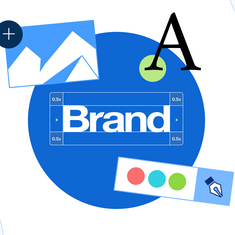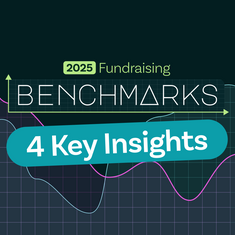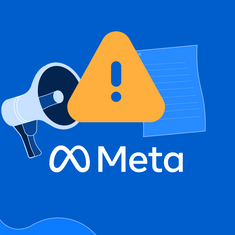
Events are a critical fundraising tool for your nonprofit. Use these savvy marketing tips to set your organisation apart and raise more for your mission.
Nonprofit events and marketing are two sides of the same fundraising coin. Marketing is how your nonprofit reaches interested prospects, while events allow you to seal the deal and deepen connections. Both of them provide your nonprofit the opportunity to spread your story, establish your brand identity, and raise funds for your mission.
Fortunately, promoting your event has never been easier thanks to digital marketing tools and communication channels. Even if you aren’t a master of marketing just yet, this guide will help you jumpstart your campaign and make your upcoming event the most successful yet. Let’s dive in!
Leverage the Google Ad Grants Program
As the most popular website on the internet, Google’s search engine results page is prime real estate for your marketing campaigns. In fact, according to Double the Donation, search ads have the highest ROI of any paid advertising channel.
There are several ways your nonprofit can use Google to promote your fundraising events. Firstly, nonprofits are uniquely positioned to leverage the search engine’s power through the Google Ad Grants program.
This grant program awards qualified charity organisations with $10,000 worth of Google advertising credits every month. All you have to do to sign up is:
- Gather the required documents to prove your nonprofit status.
- Create a Google for Nonprofits account.
- Install Google Analytics on your website.
And that’s all there is to it! Once you’ve been approved for the program, you can start picking keywords to target and writing content for your advertisements. Ensure you start marketing your event several months in advance, as it can take a few weeks for the ads to gain online traction.
2. Focus on Search Engine Optimisation (SEO)
In addition to applying for the ad grants program, your nonprofit can gain visibility on Google by incorporating SEO best practices into your website. SEO (search engine optimisation) is a digital marketing strategy that relies on aligning your website’s content with Google’s algorithmic preferences. An optimised website or event microsite ranks highly on the search engine results page for keywords that are relevant to user queries, such as “nonprofit fundraising events” or “charity auctions near me.”
Fifty & Fifty's guide to digital marketing for nonprofits states that only 1% of searchers look for results on the second page of search engine results. Fortunately, you can easily optimise your event microsite by:
- Writing high-quality educational content about past and upcoming events.
- Using targeted keywords in event-related content.
- Ensuring your website is mobile-friendly and has a fast loading time.
- Using metadata to provide context to search engines about the content on your site.
- Building backlinks to your website from high-quality and relevant sources.
- Adding alt text to images.
Easily boost the SEO value of your event microsite by implementing these changes in your CMS. By prioritising your website’s SEO health, you’ll reach the right prospects perusing Google’s search engine results page.
3. Automate your email communications
Email blasts are a tried-and-true staple of nonprofit event marketing, and you likely already use them for your fundraising campaigns. Although donors respond better to personalised emails, writing a separate message for each recipient is a huge undertaking. Thankfully, with email automation, it doesn’t have to be.
Automating your event marketing emails allows you to customise your messages without expending too much time and effort. The best email automation tools can help you:
- Create data-driven email segments. Your nonprofit has many segments of supporters that you want to stay in touch with, and they require messages to engage. Use data from your CRM to create targeted emails based on the recipient’s relationship with your nonprofit, history attending your events, and giving affinity.
- Send automatic donation receipts. It’s important to immediately notify donors when you receive their payments to maintain transparency with them. Sending automated donation receipts provides you peace of mind and donors with a receipt of their contribution.
- Collect event registrations. Add your online registration form to your automated emails to instantly receive event registration notifications.
- Update volunteers, attendees, and sponsors about the event. Your nonprofit should be prepared for anything, and you can keep your stakeholders informed every step of the way via email.
To get started with email automation, research a platform that integrates with your other software solutions and has the features to meet your needs. A platform with templates for event marketing is a plus! Then, create segmented messages and schedule them to ramp up before the event.
4. Tap into your social media network
Effectively promoting your event via social media can be a game-changing donor engagement strategy. Not only will you excite existing supporters, but you’ll spread awareness to potential attendees at the same time. Take your social media presence to the next level by:
- Collaborating with nonprofit colleagues. Have a colleague in the nonprofit space with a large following? Livestream a conversation with them about a topic relevant to your event and have them promote it to their followers. Promote your event at the beginning and end of the livestream to inspire both your followers and your guests to register.
- Working with influencers and brands. Working with a nonprofit is just the type of brand exposure that many influencers want. Start by taking stock of your connections. You probably don’t have access to huge social media stars, but local celebrities can be even more useful to engage your audience close to home. Once you’ve successfully reached out to them, create and post content about the event for the influencer’s account. On the day of the event, consider hosting a “takeover” of the influencer’s account to share enticing event content.
- Creating a Facebook Event page. Facebook’s Event page tool allows you to personalise an event landing page with your custom graphics, post photo and video updates, and collect registration information. You can even duplicate your supporters' fundraising page as a Facebook Fundraiser and let them get donations directly through the platform.
- Making interactive content. The key to social media success is capturing your audience’s attention immediately. Try implementing fun campaigns on social media, such as donation bingo boards or a hashtag that supporters can use to share their stories with your nonprofit.
Once you post event content on your social media platforms, encourage staff, volunteers, and board members to share the posts and promote the event to their own networks. This can cause a ripple effect and spread the word far beyond your circle of immediate supporters.
Now that you know tech-savvy tips for promoting your event fundraiser, it’s time to start creating your nonprofit marketing plan. No matter which marketing channels you use, it’s essential to promote the elements of your event that make it stand out. For instance, if you’re hosting an activity-based event and will be using public leaderboards, mention that in your marketing materials. By leveraging these marketing tactics and emphasising what makes your event unique, you’re sure to attract passionate advocates to your event and foster long-term relationships with them.
Stay in the loop. Fundraising tips delivered straight to your inbox!

Content Marketing Manager at Raisely, Georgie she leads content strategy to drive engagement, growth, and brand awareness for nonprofits using Raisely's fundraising platform.




